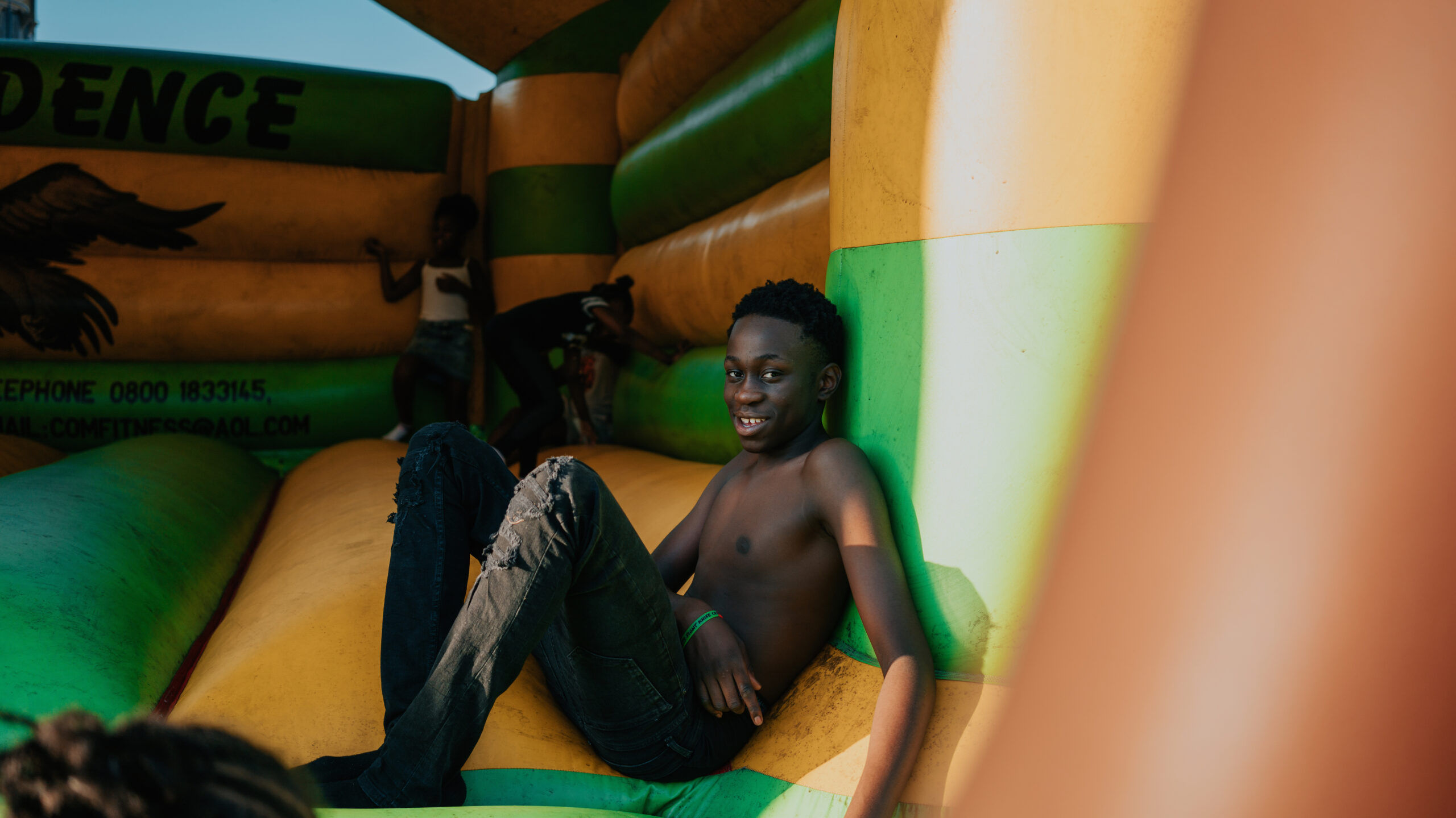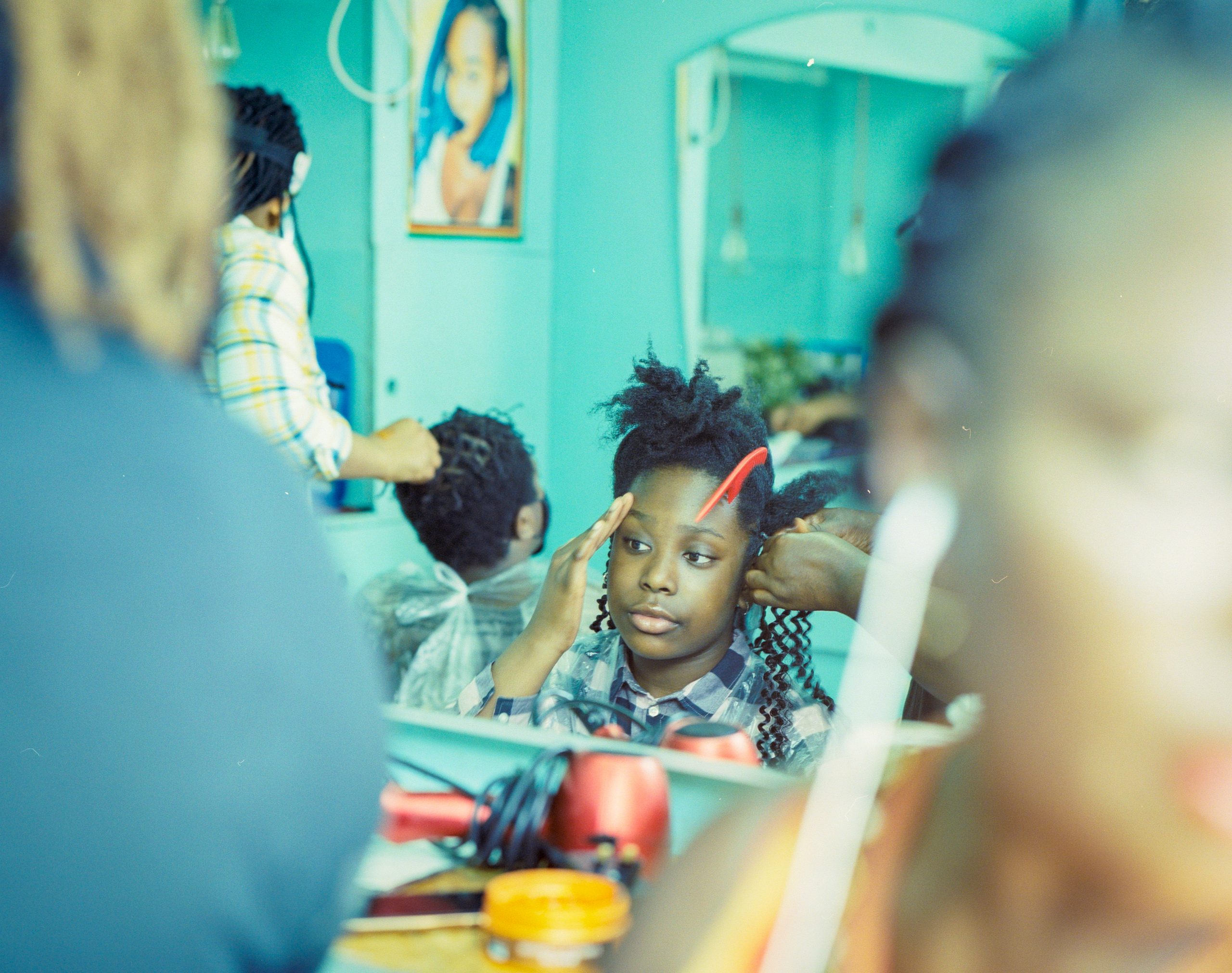
Stories from the Streets with Brunel Johnson
Growing up in North West London Brunel stumbled on photography by accident when a photographer cancelled on his friend last minute; "so I said how hard could it be to take a photo..." The moment proved pivotal and quite a change of direction after having studied Maths at university.
Since then he has cast his meticulous eye on the scenes of his home city, from motorcycle crews to intimate family moments and everything in between. Driven in part by his experiences growing up, his work is challenging narratives around inner city youth and the experiences of young and Black in Britain today. We spoke to him about his work and how he is passing his craft on to the next generation.
Interview and text by Esta Maffrett | 21.08.21
How did you get into photography?
I got into photography by accident, stumbled across it. I wasn't really into anything creative, I was more down the academic path so I studied maths at university. One day at a charity event the photographer canceled at the last minute and my friend who was the organizer was stressing out because he couldn't find a photographer. So I said how hard could it be to take a photo, being ignorant, and then he gave me the camera set up and I started to shoot. That was really the first time I had a DSLR camera and realised that there's a lot of maths involved in photography. From there one thing led to another, and I just fell in love with the practical application of maths in photography. It's kept me there since.
How has your youth and experience growing up influenced your practice today?
My experience growing up was, you could call it a typical inner London experience. I grew up in a council estate, had friends that were doing the usual stuff to survive and never thought we could go beyond the council estate. So our ideology was kind of boxed in. But then through university, we opened up and started to see that there's more to the world than just living in a council block. Because you're kind of growing up in an environment which is both fun but volatile and dangerous at the same time, you kind of learn how to dance between situations. Going from a fun situation that could be a festival in the park, to having to get home without being caught in a situation where another area wants to start jumping up. All of these experiences, from living in a council estate and actually experiencing University outside of London, you’re seeing what goes on and how things are by bringing two different worlds together. And then photography is like the glue that allows you to show these two worlds and how they formulate and how you can bring the beauty of one side with the bonus and authenticity of another side and create an image. So I'll say that's how it influenced me growing up.
You’ve taken on a lot of personal projects that always have a story and a narrative through them. How do you find inspiration for these projects?
My personal projects come from my experiences in life. Living in the UK there's a lot of misinformation and a lack of understanding from both sides, both within the community and outside of the community. And you kind of get tired of having as I call it and lots of people call it the white gaze, which tends to define everything according to one group of people. My inspiration comes from wanting to change the narrative, not in an aggressive sense, but more from an informative and educational point of view. So I want both sides, within my community to see what's going on, but also from outside to learn what goes on. Because then when we talk about racism within the community it tends to just be on the individual, a racist person dealing with another person of colour. But there's a lot more once you leave your little bubble and you find out you have structural and institutional racism which is far more than the racist person we might see on the street. A lot of people from my community do not have the opportunity to actually see or experience this institutional or structural racism because they don't leave the bubble. A lot of the time I tend to be in places where not many black men tend to be. I've been like that all my life, studying math, honestly I was the only black person on the math course. University, there were only three of us that were black, or three of us that were black or any ethnic minority. Going into an internship I've been the only black person, going into teaching as the only black person. All these life experiences have always only been me there so it's to show that this is how it is. The inspiration comes in creating something that gets the point across while missing or dodging all the landmines of being labelled and cut off.
''A person who is a photographer is always reflecting, always contemplating, always conscious and observant of the things around them which then leads them to question what they're looking at and then question themselves.''


Brunel's work is currently on display as part of the Grown Up In Brent.
An exhibition by The Museum of Youth Culture, part of Brent 2020, London Borough of Culture and supported by Brent Museum and Archives.
On Until the 31st of August 2021 at Kilburn Library, 42 Salusbury Rd, London NW6 6NN









